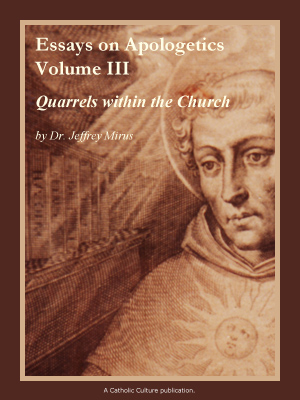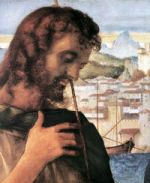Catholic Recipe: Pate d'Anguilles (Eel Pie)
Also Called: Eel Pie, Pate d'Anguilles
Against this great and good king, one of the principal patrons of France, one finds nowhere an unkind word uttered. His biographers emphasize his indifference to his own comfort, his deep and humble devotion to God and to the poor. He not only governed his nation in an admirable manner, but went as a crusader to the Holy Land with mind intent only on freeing the Holy Sepulcher from the hands of the infidel.
In the midst of wars, Louis was a lover of peace, and was often called upon to mediate between other Christian princes. Under the oak at Vincennes, he delivered wise and equitable judgments; his constant endeavor was not to appear imperious. Never impersonal about his charity, he fed beggars from his own table and daily gave meals to a hundred poor. He founded many hospitals and refuges, among them one for penitents and another for the blind.
Under his patronage, Robert de Sorbonne built in Paris the university which still bears his name. Louis appreciated and fostered learning, and there is the well-known story of an occasion when he invited Thomas Aquinas to dine at the palace. The huge philosopher sat in his place and said nothing at all, while about him the French conversation went on — "the most brilliant and noisy clatter in the world," says Chesterton, who tells the story with relish. Suddenly the table shook under the impact of a great fist. There was a startled silence as the company stared in amazement at Thomas. Unaware of them, and with another blow on the table, he said loudly, "And that will settle the Manichaeans!" Then it was that King Louis leaned over to one of his secretaries. "Take a note of this," he whispered, "and of anything more that he says. He might forget it and no doubt it is an important argument and a true one."
Louis was smitten by the plague and died in the East at the age of fifty-five, during the second crusade. He had been a good husband and father, devoted to his wife, Marguerite of Provence, and to his family of eleven children. Always at his side, to counsel him, had been his mother, Blanche of Castile, and on some occasions this great adviser had acted as his cook. For with her own hands, we are told, she was wont to prepare for Louis his favorite dish of lampreys, or eels. The recipe we have chosen is taken from Le Cuisinier Francois by Le Sieur de La Varenne, written in 1658 and, quite possibly, it was in this manner that good Saint Louis enjoyed his eel.
DIRECTIONS
Cut the eel in rounds. Mix with it yolks of eggs, parsley, mushrooms, asparagus, soft roes, verjuice, or gooseberries if in season, and do not stint either butter, or salt, or pepper. Spread this on an undercrust and cover it with pastry. In order to hold it together, butter narrow bands of paper, and putting them around the pastry, bind them lightly on. Bake the pâté and, when it is cooked, mix the yolks of three eggs with a dash of verjuice and a little nutmeg; and when you are ready to serve, pour in your sauce into the pâté and mix it well. Open the pâté and serve with the crust cut in four.
Recipe Source: Feast Day Cookbook by Katherine Burton and Helmut Ripperger, David McKay Company, Inc., New York, 1951





